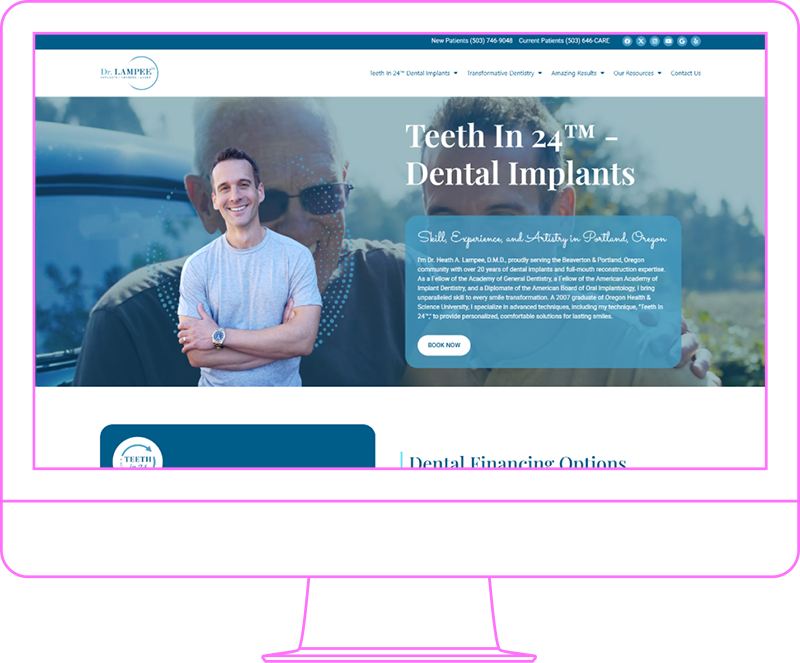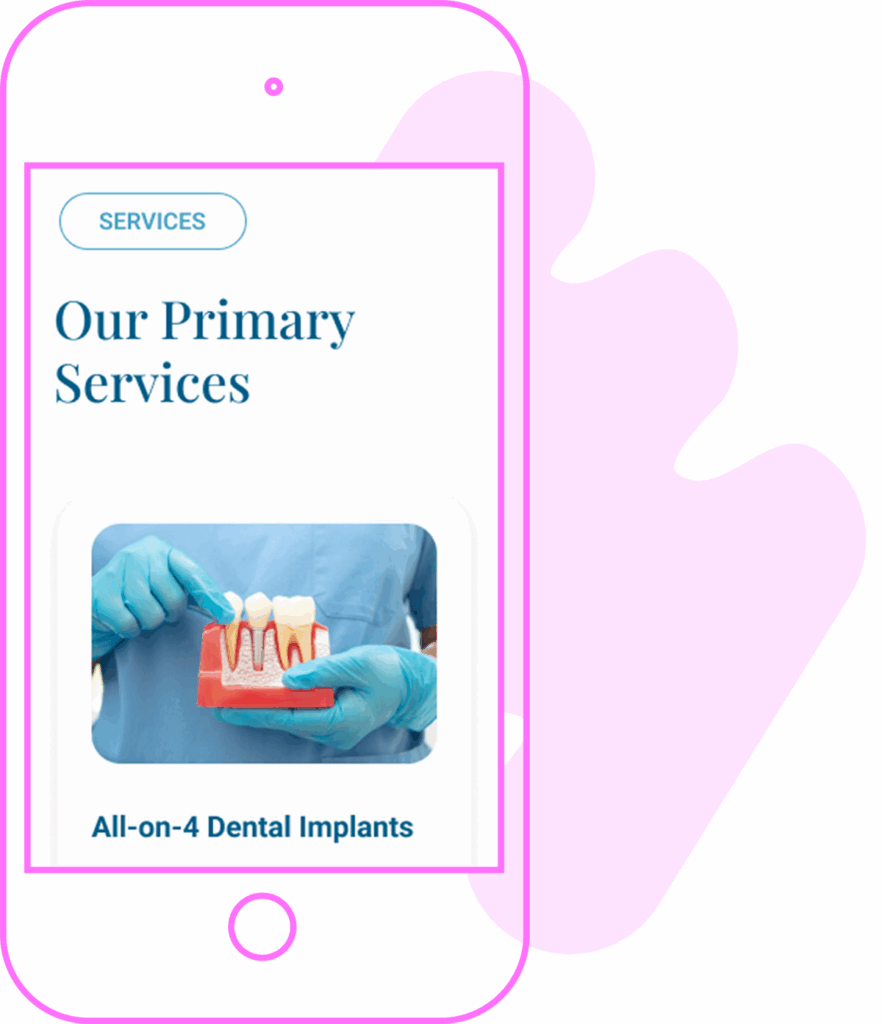
In a saturated Portland dental market, Dr. Lampee’s practice struggled to gain visibility for high-volume generic searches like “dental implant Portland.” Although his “Teeth in 24” service was strong, prospective patients searching general terms weren’t finding him.
To solve this, Dr. Lampee partnered with Choice OMG to overhaul his digital presence. The team consolidated thin, scattered implant pages into a single authoritative pillar, implemented structured schema markup, and reinforced internal linking to the consult funnel.
Within 12 months, organic impressions for “dental implant” soared from 27,500 to 49,800 (+81%), clicks rose from 28 to 45 (+61%), and average search position nudged from 34.4 to 33.6—shifting visibility to more transactional queries. These gains translated directly into consult submissions and over $200K in incremental Q1 2025 revenue from implant procedures.
Generic queries like “dental implant Portland” represent a major awareness funnel—yet Dr. Lampee’s site wasn’t capturing that traffic. While “Teeth in 24” pages were performing, generic leads landed on outdated or fragmented content, or worse, competitor websites.
Key implant pages appeared on pages 3–4 of search results (positions 34–36).
Multiple legacy URLs (e.g., /implant-dentistry/, /dental-implants-beaverton/) lacked depth and cross-linking, diluting search authority.
Qualified traffic bypassed the site entirely, unaware of Dr. Lampee’s distinctive in-house implant solution.

Merged eight outdated implant-related pages into a single, comprehensive pillar at /dental-implant/, structured for both user clarity and crawlability.
Crafted a balanced meta title—“Dental Implants Portland | Same-Day & Full-Arch Implants | Dr. Lampee”—to target both broad and high-intent searches.
Created an 800-word standalone page with embedded form and click-to-call button. Linked from all high-traffic entry pages.
Added a new comparison section—“Teeth in 24 vs. Traditional Single Implants”—with internal links to both the new implant pillar and consult page.
Published a 1,200-word post on “Dental Implant Aftercare” to reinforce topical authority and drive internal link equity.
Made “Dental Implant” the top-listed service. Uploaded new photos (CBCT scans, in-surgery shots) and a video walk-through of the “Teeth in 24” process.
Compressed the hero banner image to 250 KB and lazy-loaded diagrams and testimonials to improve page load times.
Achieved a mobile first contentful paint (FCP) of 1.3 sec—down from 2.7 sec—improving user experience and SEO signals.
301-redirected 8 legacy URLs to the new implant pillar. Updated XML sitemap and re-submitted in Google Search Console.
Consolidating eight legacy URLs into one optimized implant page allowed Google to better understand the site’s expertise—driving an 81% boost in impressions.
Answering key patient questions in HTML and schema helped secure multiple “Position 0” snippets, including “What’s the success rate of dental implants?”—increasing visibility and trust.
Guided paths from /dental-implant/ → /free-implant-consult/ → /teeth-in-24/ captured patients across the search journey—from awareness to booking.
Updating GMB with implant-relevant visuals and reviews containing “dental implant” helped build local trust and improve performance for “[city] implant” queries.
Though the average ranking improved just 0.8 positions, the page began ranking for higher-value, transactional keywords—fueling consult submissions and bookings.
By unifying eight thin implant pages into a structured content hub—supported by schema, thoughtful UX, and targeted internal links—Dr. Lampee’s practice achieved an 81% lift in impressions, a 61% increase in clicks, and nearly $200K in additional Q1 2025 implant revenue.
Drop your contact details, and our senior strategist will map out a results‑driven engagement—no junior hand‑offs.